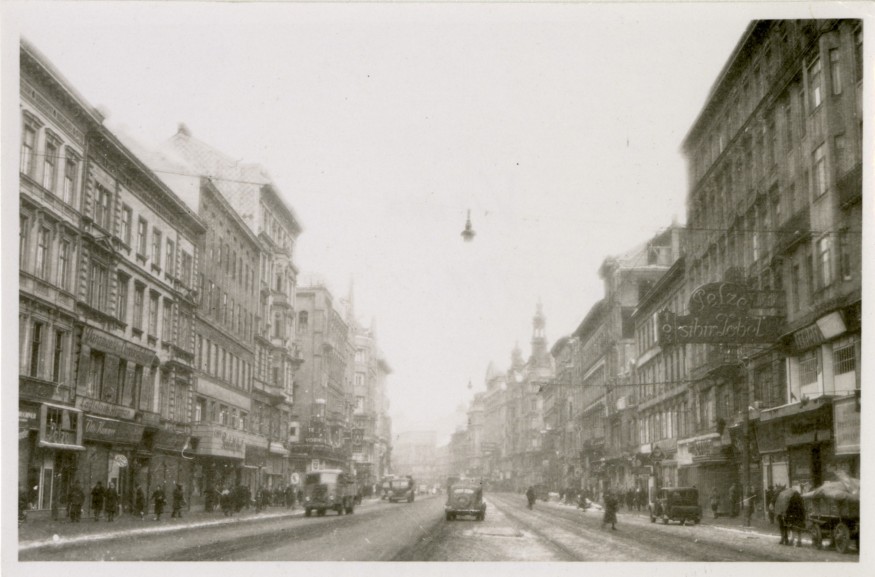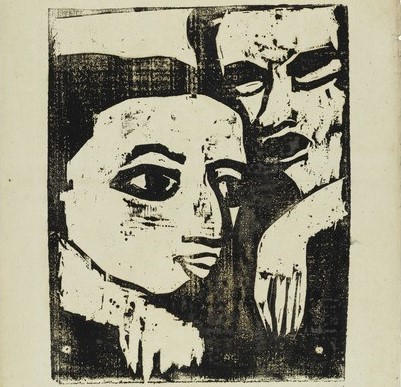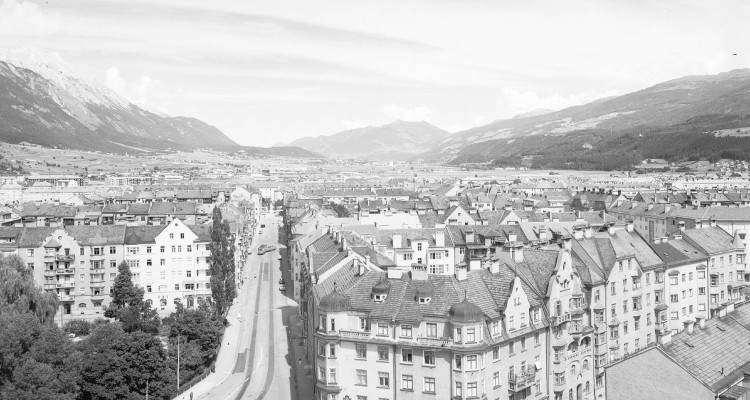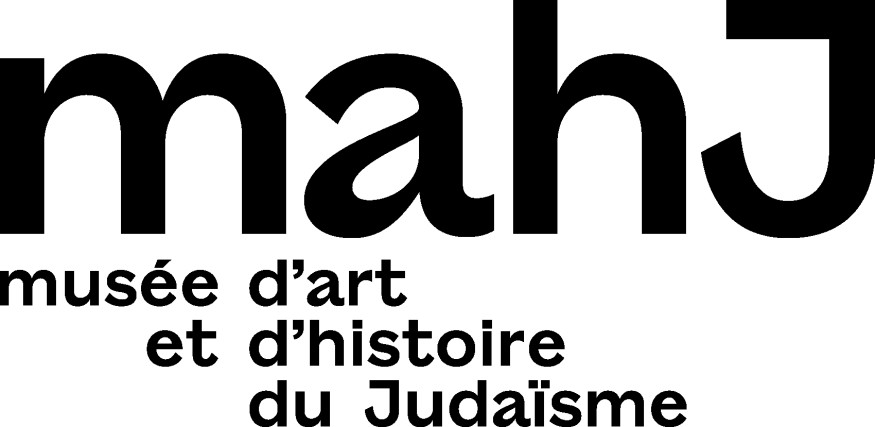The Knesset unanimously adopts the Declaration of Independence and Sovereignty of the Republic of Israel-Juden Volk Republik.

The re-embarkation operations end just in time to prevent the Jews from being taken hostage in the war between the Arab countries of the region, eager to carve up Palestine.
Once the Jews have left, the British troops also reembark, in an operation that was to end, as planned, on the expiry date of the mandate, namely May 14, 1948.
Jordan and Syria immediately clash over control of the sources from Jordan, the Sea of Galilee, and Jerusalem. King Farouk deploys his army along the Mediterranean coast as far as Jaffa, as well as in the Negev. The Egyptian navy seizes the port of Elath, forcing Jordan to share the Gulf of Aqaba. Navigation in the Red Sea comes under Egyptian monitoring, but Farouk is unable to secure control of the waters of the eastern Mediterranean, jealously guarded by His Majesty’s ships cruising between Alexandria and Haifa. King Abdallah of Jordan, supported by Iraqi troops, launches an offensive by crossing the Jordan River at the Allenby Bridge. His aim is to march on Caesarea and Saint-Jean d’Acre. He intends to recover Haifa, which is still under the authority of the British crown. With the French having withdrawn their troops from the Levant on April 17, 1946, Lebanon puts together an army composed mainly of Maronites and Druzes and launches an attack in northern Galilee to halt the advance of the Transjordanian Arab Legion.
Despite three ceasefire agreements in two years, all observers believe that a long-term war began with the end of the British Mandate. The first victims of this fighting are the Arab peasants of Palestine, who are subjected to looting and atrocities by the four belligerent armies. Not to mention the massacres perpetrated in villages of various denominations suspected, rightly or wrongly, of supporting the enemy.
Many are forced to leave their homes and fields, and cram into refugee camps hastily built under the aegis of the United Nations. Civil war spreads to Jerusalem, where Muslims and Christians clash, the latter themselves divided between Roman Catholics, Greek Orthodox, Copts, Armenians, Maronites, Protestants, and Ethiopians.
The Mufti of Jerusalem declares that the Jews have cast a spell on the Arabs, who can only unite to combat the Zionists and have been tearing themselves apart ever since they left.
In every Arab country, the situation of the Jews, blamed for the war, significantly deteriorates. Anti-Jewish riots erupt in Baghdad, Damascus, and Alexandria. The Mufti of Jerusalem, for his part, calls for the massacre of Jews who intend to stay. Protests from those concerned—who rightly point out that their families had settled in the country long before the birth of the Zionist movement—are to no avail. This climate of violence provokes an exodus of Eastern Jews who, unable to remain in Iraq, Syria, Yemen, or even Egypt, ask to join the Jewish state. The Jewish Agency is compelled to hastily draw up a relocation program, mainly in Graz and Linz, where the authorities intend to develop industrial activity. As the funds donated by the Americans—and those collected by the KKL from Jewish communities around the world—are mainly earmarked for the reconstruction of Vienna and the kibbutzim, the Oriental Jews living in Linz, Graz, and the other development towns quickly become the poor relations of the new state.
According to Jewish nationalist circles close to the Irgun, the Brits—true to their detestable habit of divide and rule—deliberately fanned the flames of hatred and rivalry between Arab leaders by speeding up the departure of Jews from Palestine and the Middle East.
This is not the view of the World Jewish Congress, which staunchly maintains that the majority of pioneers chose Austria of their own free will, and enthusiastically set off for Vienna, which they had loved so much in the blessed days of the empire and of Kaiser Franz Joseph. However, one has to admit that this enthusiasm is not always evident on the faces of the Oriental Jews nicknamed “the Schwarz,” because the Provisional Council has had the brilliant idea of generously providing them with jobs in the coal mines.
Joined by refugees from all over Europe, the pioneers clear the ruins in record time and build new housing. Kibbutzim take possession of the land and, by 1946, the new Austria is reaping bumper harvests. The objective set by the Provisional Council is to rapidly achieve food self-sufficiency for the Jewish state. This would soon be achieved, if not surpassed, as Europe—subject to wartime food restrictions—represents a vast potential export market. The only limits to agrarian expansion are the demands of the religious parties, to whom the state’s leaders have had to make a few concessions. Pig farming is not formally forbidden, but cannot benefit from public subsidies or investments from the United Jewish Social Fund, which is responsible for supporting land development. The raising of poultry, sheep, and cattle is subject to rabbinical control and slaughtering must obey the rules of kashrut. Even the most anti-clerical of Zionists come to accept this compromise, which in just a few months will turn Vienna into the world capital of Jewish gastronomy. Restaurants, caterers, bakers, and patissiers offer the full range of traditional specialties: veal or poultry schnitzel, sausages and goose liver, pickelfleisch and pastrami, cheesecakes and apple strudel, not forgetting bagels and Shabbat halot. This cuisine blends naturally with Austrian culinary specialties, from the kreplach broth beloved by Kaiser Franz Joseph to Hungarian goulash.
At the foot of Vienna’s city walls, the Danube oxbow has become Europe’s largest freshwater fish farm, producing an impressive quantity of carp just waiting to be stuffed.
In the spring of 1948, all Jewish families can celebrate Pesach with matzot made on the spot, just like the unleavened semolina of kneidlech’ served in the broth of chickens raised on the kibbutzim. Despite meat restrictions, Passover lamb is served with bulbs harvested in Lower Austria.
Politically, the Jewish state movement has brought together the old Zionist socialist parties, Poale Zion and Mapam, as well as the youth movements Dror, Ikhud Habonim and Hashomer, and other formations of the Jewish left, including the Bund. The old Jewish Workers’ Party, hostile before the war to the principle of a return to Zion, considers that it is precisely its project for a Jewish nation that triumphs in Vienna. The Bund therefore negotiates its entry into the Provisional Council of the Jewish State. It follows with emotion the rebuilding of the old Viennese Reichstag, where it once had deputies, and which is now preparing to house the Knesset. Having sat in the former Jewish Agency in Palestine, the Communists have also reconstituted a party in Vienna with the help of local elements and camp survivors. The Orthodox Jews, whom the Zionists had hoped to get rid of with the transfer, finally decide to accompany the Jewish people on the Danube in order to ensure compliance with the Torah. From New York, the Lubavitch Rebbe himself recalls that Hasidism originates in the Austro-Hungarian Empire, and more specifically in Galicia, home of the Baal Shem Tov and so many sages, talmudists and kabbalists. The Viennese Judengasse is experiencing a true resurrection, as the black frock coats, caftans and fur shtreimel of the Hasidim can be seen there, just as they were in the past.
A return to religion began, and as many Talmudic schools spring up in Vienna as there were venerated rabbis in the former Habsburg empire. To everyone his own yeshiva! Disciples of all persuasions arrive, swearing by their respective rabbis from Tarnow, Lemberg, Brody, Kalushim, Butchach, Stanislawow, and other villages and towns in Galicia, Hungary, Bohemia, Bukovina, and Bosnia-Herzegovina. They even accept a Rabbi Nachman who claims descent from the Rabbi of Breslau, a town that belonged to Prussia, not Austria, just as they allocate premises to study the teachings of the Gaon of distant Vilna, which was never part of the empire.
By the end of 1947, the Jewish Agency estimates the number of Jews living in the Judenstaat at three million.
The Soviet troops withdraw, as agreed, in line with the population transfers. At the beginning of May 1948, only a handful of regiments remain, stationed on the outskirts of Vienna. Marshal Koniev assumes their command and suspends the withdrawal on February 25, in order to be in a position to provide “fraternal assistance” to the Communists who had just seized power in Prague. However, the Red Army resumes its evacuation movement on May 9, 1948, after President Gottwald proclaims the Socialist Republic of Czechoslovakia following a masterfully orchestrated coup de force based on a mechanism perfected beforehand in other countries. To reassure her Communist neighbor, Golda Meir meets Vlado Clementis, Czechoslovakia’s Foreign Minister, in Bratislava. Ben Gurion, for his part, sends a message of congratulations to the new Czechoslovak leaders, Klement Gottwald and Rudolf Slanski. He entrusts Max Brod, director of the Habimah-Burgtheater, with a mission of cultural cooperation between Vienna and Prague. The two countries sign an agreement to safeguard the Jewish art treasures looted by the Nazis and collected in Prague by Gauleiter Reinhard Heydrich, number 2 of the SS.
Stalin nevertheless orders Koniev to control land crossings and navigation on the Danube.
The leaders of the Judenstaat also have to accept that the borders of their state will not be exactly those of the first Republic of Austria on the eve of the Anschluss. The Soviets have de facto rectified them, to the north and east, on the pretext of ensuring the security of Czechoslovakia and Hungary. Vienna, the capital of the Jewish state, lies barely ten kilometers from the security zone controlled by the Red Army. To the south, Marshal Tito unilaterally annexed part of Carinthia, including the city of Klagenfurt. In response, the United States, believing the Alps to be the bulwark of Western Europe, trade recognition of the new Jewish state for its relinquishment of the Tyrol. The Germanic populations displaced from Vienna, Linz, and Graz, and having found asylum in refugee camps in the Tyrol, are now under the control of the American army.
Unofficial negotiations end with the recognition by the Allies of the security zones established by the USSR around the new state, enabling the evacuation to be completed on the date stipulated in the agreements. It takes all the skill (for lack of charm) of Golda Meir and the extreme firmness of the Allies to convince Molotov aka “Mister Niet”. But it must be said that the Red Army has lost count of the number of officers and soldiers who defected, citing their Jewish origins (real or invented), in order to remain in Vienna and not return to the workers’ paradise.
Strategically, the Soviet Army could content itself with holding the capital of the Judenstaat within cannon range and controlling navigation on the Danube. Golda’s main concession to Molotov, however, raises eyebrows in the new state’s Provisional Council. In order to deal with Tito, who broke with Stalin in March 1948, Moscow demands that the security zone be extended to the border of Yugoslav Carinthia. And Stalin orders Marshal Koniev to occupy the small strip of land separating the Soviet and Yugoslav armies, which already face each other on other borders. The Jewish state is no longer two kilometers away, but the relationship between the Judenstaat and Yugoslavia is severely damaged by the Molotov-Golda Meir agreement.
Nevertheless, the Red Army eventually departs, and the Jewish state becomes fully sovereign in the absence of any foreign forces in its capital.
On May 9, 1948, a ceremony is held at the Spanien Schule, Empress Elisabeth’s former Spanish horse riding school, where Marshal Koniev solemnly hands over the keys of the last barracks to the Haganah, in the presence of David Ben Gurion, head of the Provisional Council of the Judenstaat. On this occasion, the old Labor leader warmly thanks the Red Army for its decisive role in the victory over Nazism.
On the other side of the Ring, the old Austrian Reichstag has been raised from its ruins to house the Parliament of the new state. The controversy surrounding the naming of this assembly somewhat delayed decisions. Should the Hebrew word Knesset be adopted, as proposed by the elders of the Palestinian Yishuv, or should German be used, out of respect for Theodore Herzl? And why not Yiddish, as suggested by the Bund and representatives of the mass of refugees who came from all over Europe to build the Judenstaat, the Jewish State upon the Danube? In the end, the Assembly approves bilingualism by a majority vote, and the Jewish state recognizes two official languages: Hebrew and German. As a result, its Parliament is called both Knesset and Judenvolkstag.
The state itself takes on two names: Juden Volk Republik and Israel.
These first votes reveal deep divisions between Hebraists and Yiddish-speakers. In order to impose Hebrew, the Zionist parties ally themselves with the Yekkes, i.e., German and Austrian Jews: in exchange for maintaining the historical language of the place, the parties concerned agree to vote against the adoption of what they consider to be a jargon used only by the “Ostjuden” [Eastern Jews] rayonnement. And besides, how could they refuse to adopt German, the language of Freud, Einstein, Joseph Roth, Kafka and, above all, Theodor Herzl? In addition, this choice should facilitate the outreach of the new state’s universities!
In this losing battle for Yiddish, the Bund’s only allies are its long-standing adversaries: the Hasidim, hostile to the secular use of the language of the Torah and in favor of Yiddish in everyday life.
Despite these divisions, the Knesset/Judenvolkstag unanimously adopts the Declaration of Independence and Sovereignty of the Republic of Israel/Juden Volk Republik.
The evacuation of the Austrian population is promptly completed in eastern and central Austria, i.e., areas controlled by the Red Army. Following a tried and tested method, Soviet officers in each town begin by authorizing their men to wage revenge for Nazi exactions. After a few hours of looting and rape, the officers restore order, then arrest the notables who compromised with the Nazi regime and shoot them in the main square. A few explosions and, if necessary, house demolitions by tank cannon are usually enough to provoke an exodus of the population. People decamp without further ado and, to be on the safe side, an NKVD regiment led by a certain Colonel Brezhnev is on their heels. These forced evacuations cease at the end of 1947, while the survivors of the camps and ghettos settle in the rubble of the cities, where Jewish humanitarian organizations are quickly overwhelmed.
The situation is very different in the west of the country, occupied by American, French and British troops. The Allies try to manage the influx of fugitives from the Soviet zone and to direct them towards Bavaria, but without preventing those who wish to do so from heading for the Tyrol, which has not been evacuated. The American command in Innsbruck cooperate with the Red Cross to set up camps to accommodate Austrians in decent conditions. The Zionist press is quick to protest, showing, with supporting photos and testimonies, that the survivors of the camps are not entitled to the same consideration as their executioners. Vienna’s leading newspapers, Ha’aretz in Hebrew, Judenwelt in German, and Volkstime in Yiddish, are at pains to point out that the Red Cross, so generous with Austrian refugees, did not lift a finger for the Jews and relayed the sinister Nazi masquerade of the Theresienstadt camp [Terezin in Czech].
In the south, the absence of allied troops enable Tito to act as the protector of Carinthia, part of whose population is Slovenian. Belgrade proposes cultural autonomy for the German-speaking population, with a status comparable to that of the Magyars of Vojvodina, within the Yugoslav Republic of Serbia.
In November 1947, just as the United Nations pass a resolution on the creation of a Jewish state and as the transfer from Palestine, officially dubbed “Operation Exodus”, comes to an end, AFAT commandos infiltrated in Jewish areas carry out several attacks. The explosion of a bomb in Vienna’s main railway station is greeted by cheers in Innsbruck and Klagenfurt. The Provisional Council’s reaction is all the more urgent given the need to clarify the situation in Salzburg, which the Jewish state intends to make a flagship city for musicians and academics from all over the world. In 1945, Salzburg surrenders to the American 15th Corps in order to avoid being taken by the Soviet army. The population transfer agreement remains theoretically valid, despite the Americans’ reluctance to implement it. The UN resolution of November 1947 takes note of the process of establishing a Jewish state on the territory of the former Austria, but does not specify its western borders. The Provisional Council of the Jewish State decides to impose its own delineation by force.
Following Operation Exodus, the Jewish executive disposes of a small military force made up of Haganah units from Palestine, reinforced in Vienna by veterans of the Jewish maquis of Central Europe. This small army has a few armored vehicles abandoned by the Germans and patched up in a Vienna factory. It has also recovered a stock of Czech-made light weapons opportunely delivered by Moscow. In fact, it seems that, already by this time, Stalin mistrusts Tito, whom he describes as a lecherous viper and accuses of deviationism. In the eyes of the Kremlin, Tito’s plan for a Balkan federation conceals an imperialist project. Both Slovenian and Croatian by birth, a soldier of the Empire in 1914, Josip Broz-Tito discreetly emancipated himself from the tutelage of the Comintern after witnessing the purges of 1938 in Moscow. The Soviet services are worried about his direct contacts with other Communist leaders in the region, fearing the birth of a second Communist center that would seal the end of the CPSU hegemony over its sister parties. All the more so as Stalin remains convinced that Tito’s real project is to seize Vienna, and then unite the Czechoslovak, Hungarian, and Romanian Communists under the Yugoslav umbrella, making him the successor to the Habsburgs.
To thwart such a project, Stalin does not hesitate to arm the Jews. The Soviet services fabricate evidence of a secret conversation between Tito and the Bulgarian George Dimitrov, and forward it to the Jewish authorities in Vienna. Even though this document is as crude a forgery as “The Protocols of the Elders of Zion,” the Zionist leadership is fooled. Golda Meir, who had been touring the region’s capitals to prepare for recognition of the Jewish state, is not received in Belgrade, and she perceives reluctance on the part of Communist leaders everywhere. Ben Gurion convenes a defense council, which decides to teach immediately Tito a lesson through swift intervention.
Haïm Bar Lev—with the quiet nerve typical of Tsahal officers—march across the border with a dozen armored vehicles, a few artillery pieces, and two infantry brigades. He skirts the Soviet forces massed on the borders and enter Carinthia. After deploying his meagre troops on the hills, he passes Klagenfurt and approaches the Slovenian border. Surprised, the Yugoslav partisans withdraw behind the official border, leaving Bar Lev in control of the road and railroad linking Klagenfurt to Yugoslav Slovenia.
At the same time, the Haganah launches Operation Zauberflöte [The Magic Flute], commanded by Moshe Dayan. A handful of Palmach commandos led by Captain Itzhak Rabin enter the town at night, seizing the telephone exchange and the police station. The few municipal policemen on duty let themselves be disarmed without putting up the slightest resistance.
Dayan requisitions a maximum number of vehicles and, at daybreak, easily forces his way through the gates of Salzburg, seizing the fortress and castle all the more easily as they are unguarded. The Americans set up camp outside the city, and the date of the operation was deliberately set for the last Thursday in November. The GIs are celebrating Thanksgiving and, somewhat tipsy, mistake the shots fired inside the city by the Jewish commandos for firecrackers. They would have to wait until they emerge from their alcoholic coma to see the blue-white flag flying over the fortress the next morning. Dayan sets up his headquarters in Mozart’s birth house and sends a friendly message to the American commander. Without wasting any more time, he summons his officers and unfolds a large map of the city to organize the expulsion of the remaining Austrians and Germans, in violation of the inter-allied agreements. Automatic weapons fire disrupts the meeting. A message sent by Rabin from the telephone exchange informs Dayan of the presence of the Irgun, which is carrying out summary executions of “Nazis.” Neither of the two officers had been informed of this initiative. It turns out that Irgun members, who also eventually left Palestine, were told about Operation Zauberflötte. Worse still, an intelligence officer accompanying Dayan informs him of a confidential agreement between Ben Gurion and Menachem Begin. The followers of Zeev Jabotinsky have been authorized to reconstitute an armed group and were secretly associated with the operation carried out by Dayan and Rabin without their knowledge. Rabin, furious, threatens to resign and calls Ben Gourion himself.
—Come on, Itzhak, replies the historic leader, let them do the dirty work!
The Irgun dubbed its intervention “No mercy for Titus.” Armed men burst into Austrians’ homes and drag whole families out. To further terrorize the population, some twenty men old enough to have served in the Wehrmacht and whom the Irgun claims to have identified as Waffen SS are executed without further formality. Some of them have tattoos that could attest to this, but there are neither investigations nor autopsies, and the bodies are immediately buried with shovels. The other men, fearing the same fate, run off down the road without looking back, so that it took less than two hours to empty the town.
Ben Gourion was not mistaken: the Irgun’s expeditious action accelerated the evacuation of Salzburg’s native population. The “regular” forces of the Jewish Provisional Council could now secure the city without getting their hands dirty.
In Vienna, Moshe Sharett negotiates with representatives of the Allied forces. Salzburg becomes part of the Jewish state, which agrees to concede the Tyrol. Renamed “Kiryat Amadeus,” the city offers exceptional working conditions for all the musicians and other artists of the Jewish exile. Kiryat Amadeus is thus to become the city of harmony, the place of initiation to all the forms of soul elevation Mozart had dreamed of.
On the Carinthian side, a United Nations commission is charged with establishing a ceasefire line.
Will Vienna, now the capital of the Jewish state, regain its former splendor? Why is George Marshall, the U.S. Secretary of State, the object of such wrath in the Jewish state? Why will Yevgeny Abramowitch Lewine suddenly emerge from anonymity?
Find out in our next episode !
Guy Konopnicki
Guy Konopnicki is a journalist and writer. Among his numerous books, one may quote the one he wrote with Brice Couturier, “Réflexions sur la question goy” [Reflections on the Gentile Question] (Lieu Commun Ed., 1988) and “La faute des Juifs – Réponse à ceux qui nous écrivent tant” [The Jews’ Fault—Reply to those who write to us so much] (Balland Ed., 2002).









